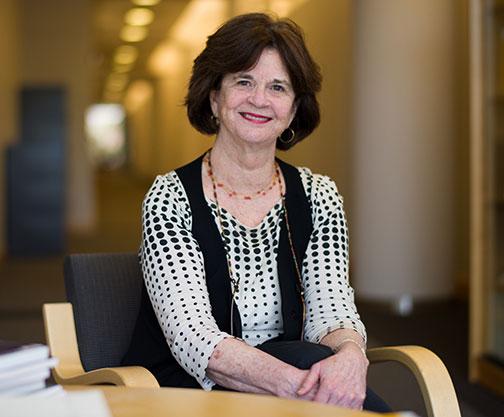

What does it mean for a child in America to be born to unwed parents? For a decade and a half, sociology professor Sara McLanahan has been searching for answers to that question. In the late 1990s, she began collecting data about the families of 5,000 children using periodic, in-depth interviews and vast amounts of demographic information to compile a detailed portrait of what she calls “fragile families.” Her research has increasing relevance to today’s society: While 5 percent of children were born to unmarried couples 50 years ago, 40 percent of children are born to them today.
Researchers for McLanahan’s Fragile Families and Child Well-Being Study have completed five rounds of interviews with their subjects, who live in 20 U.S. cities — conducted soon after the children are born and at ages 1, 3, 5, and 9. The study contains the most extensive existing data on unmarried partnerships with children, and receives funding from the National Science Foundation, the U.S. Department of Health and Human Services, and other organizations. The data are available to researchers across the country and have been used in more than 400 journal articles, 65 dissertations, and 42 books.
Early research in McLanahan’s study showed that more than 80 percent of unmarried parents were in a romantic relationship with each other when their child was born, but only a third remained together five years later. By the time their first child was 5, almost a quarter of unmarried mothers had given birth to another child fathered by a different man. In addition, half of the fathers of children born into “fragile families” were in jail or previously were incarcerated, making it difficult for them to find employment and provide for their children. “There’s an enormous amount of instability and complexity in the lives of these families,” McLanahan says.
Unmarried parents in the United States often are poorer and less educated than married parents and less able to withstand economic shocks, leading their children to have higher rates of asthma and obesity, poorer school performance, and more aggression.
McLanahan completed her last round of interviews between 2007 and 2010, during a historic economic decline. Among her findings: For every percentage point rise in the unemployment rate, fragile families had a 16 percent greater chance of suffering a financial hardship, such as having utilities cut off, as well as higher rates of smoking and drug use. The weakened economy also led to increases in domestic abuse and harsh parenting.
In the study’s next phase, which started in February as the children turned 15 years old, McLanahan wants to explore the teens’ romantic relationships, as well as how public policies might affect their involvement in the criminal-justice system. The two most important factors in improving the lives of these families, McLanahan says, are women’s delaying reproduction until they are at least 25 and an improved job market, so unmarried parents have a better shot at financial stability.
